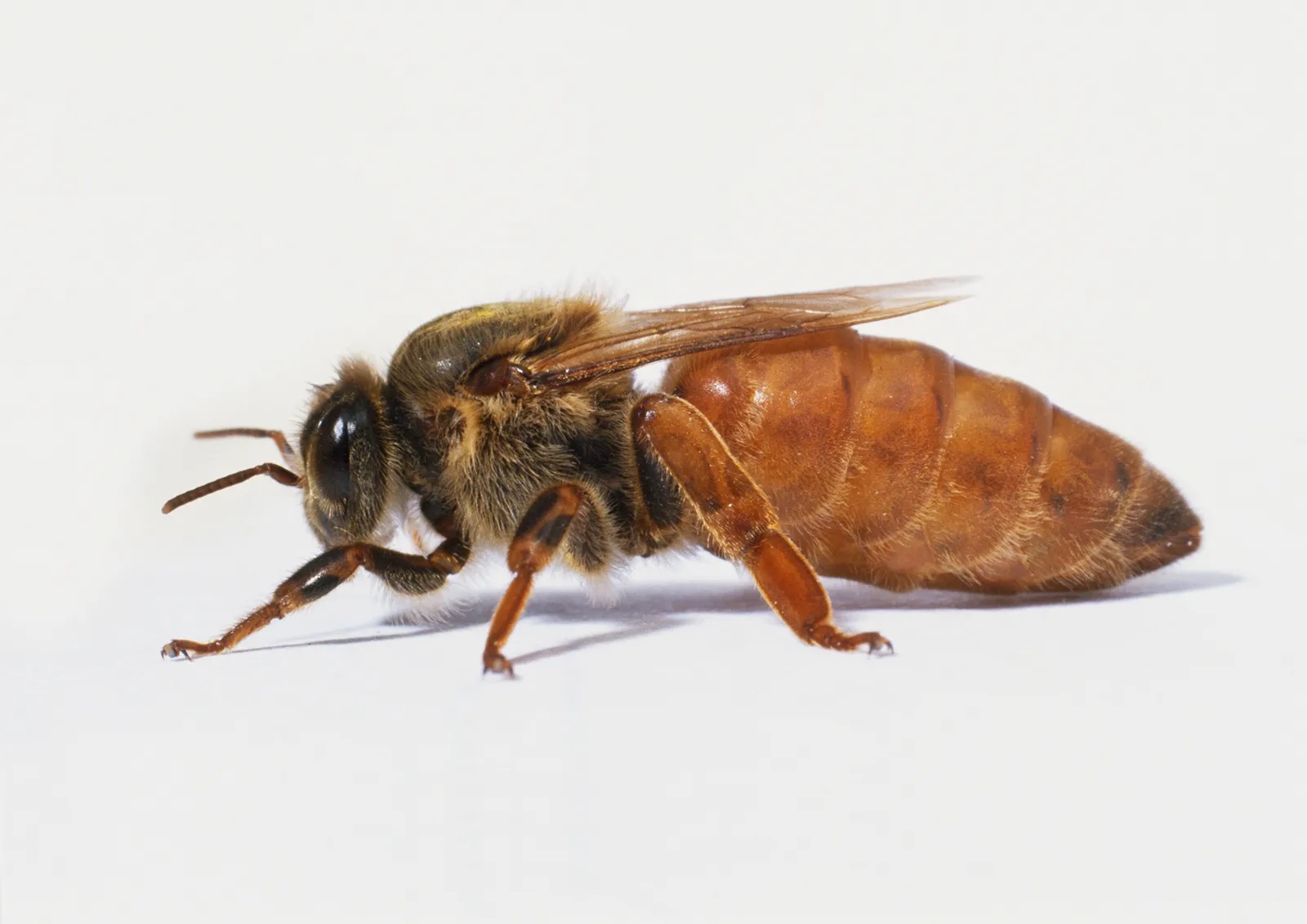
Queen bees are the heart of a honeybee colony, wielding immense influence over its dynamics and success. These remarkable insects hold a pivotal role in the intricate social structure of the hive, serving as the sole reproductive female and the leader of the colony. Understanding the queen bee and her vital contributions is essential for appreciating the fascinating world of honeybees and the critical role they play in our ecosystem. In this article, we will delve into 20 captivating facts about queen bees, shedding light on their behavior, lifecycle, and significance within the hive. From their royal lineage to their extraordinary reproductive abilities, the queen bee's story is one of resilience, cooperation, and natural marvel. Join us as we unravel the enigmatic world of queen bees and gain a deeper appreciation for these extraordinary creatures.
Key Takeaways:
- Queen bees are the heart of a honeybee colony, living for 2-3 years and laying up to 2,000 eggs per day, ensuring the hive’s growth and prosperity.
- The queen bee’s pheromones and presence inspire harmony and purpose among worker bees, ensuring the hive’s stability and productivity.
Queen bees have a lifespan of 2-3 years.
Queen bees, the heart of a honeybee colony, are known for their remarkable longevity. With a lifespan of 2-3 years, these majestic rulers play a pivotal role in the hive's sustainability and productivity. Throughout their existence, queen bees exhibit an extraordinary capacity for egg-laying, ensuring the continuous growth and prosperity of the colony.
The queen bee is the only fertile female in the colony.
Within the intricate social structure of a honeybee colony, the queen bee holds a unique and indispensable role as the sole fertile female. This distinction grants her the exclusive ability to lay eggs, perpetuating the colony's population and securing its future. The queen's reproductive prowess is a testament to her significance in sustaining the hive's vitality and continuity.
Queen bees can lay up to 2,000 eggs per day.
Renowned for their prolific egg-laying capabilities, queen bees can lay a staggering number of eggs daily, reaching up to 2,000 at the peak of their reproductive phase. This remarkable feat underscores the queen's pivotal contribution to the colony's growth and prosperity, ensuring a robust population essential for the hive's survival.
The queen bee emits pheromones that regulate the behavior of the colony.
Through the secretion of pheromones, the queen bee exerts a profound influence on the collective behavior and dynamics of the hive. These chemical signals serve to maintain cohesion and order within the colony, playing a crucial role in orchestrating activities such as foraging, brood care, and defense. The queen's pheromones are instrumental in fostering a harmonious and functional honeybee community.
The queen bee is larger in size compared to worker bees.
Distinguished by her larger physique, the queen bee possesses notable physical differences from her worker counterparts. This size contrast is a defining characteristic that sets the queen apart, underscoring her regal presence and reproductive prowess within the intricate social fabric of the honeybee colony.
Queen bees are well-cared for by worker bees.
In a testament to the hive's devotion to its matriarch, queen bees receive meticulous care and attention from the worker bees. These dedicated attendants cater to the queen's needs, ensuring her well-being and comfort as she fulfills her vital role in sustaining the colony's population and vitality.
The queen bee's mating flight occurs early in her life.
During the early stages of her life, the queen bee embarks on a momentous mating flight, venturing into the skies in pursuit of potential suitors from other colonies. This pivotal journey marks a crucial phase in the queen's reproductive journey, as she seeks to mate with drones and secure the genetic diversity vital for the colony's resilience and adaptability.
The queen bee mates with multiple drones during her mating flight.
In a remarkable display of reproductive strategy, the queen bee engages in mating with multiple drones during her nuptial flight, ensuring a diverse genetic makeup within the colony. This multifaceted approach to mating serves to fortify the colony's genetic robustness, enhancing its capacity to thrive and adapt to varying environmental challenges.
The queen bee's wings are shorter than those of worker bees.
A distinctive feature of the queen bee lies in her comparatively shorter wings, setting her apart from the worker bees within the colony. This physical attribute aligns with the queen's specialized role, reflecting her focus on egg-laying and reproductive duties rather than the foraging and hive maintenance activities undertaken by the worker bees.
The queen bee is capable of controlling the gender of her offspring.
Through the selective release of sperm from her spermatheca, the queen bee possesses the remarkable ability to influence the gender of her offspring. This biological phenomenon underscores the queen's pivotal role in shaping the colony's demographic composition, contributing to the intricate balance and functionality of the honeybee community.
Queen bees are raised in specially constructed queen cells.
In preparation for the emergence of a new queen, worker bees construct specialized queen cells within the hive. These unique enclosures serve as the nurturing grounds for the queen bee's development, providing an environment conducive to her growth and maturation as she prepares to assume her vital role in the colony.
The queen bee's presence instills a sense of order and stability within the hive.
As the central figure of the honeybee colony, the queen bee's presence exerts a calming and stabilizing influence on the hive. Her regal demeanor and reproductive prowess serve to foster a sense of cohesion and purpose among the worker bees, contributing to the harmonious functioning and sustainability of the collective community.
The queen bee's royal diet sets her apart from other bees.
In a testament to her esteemed status, the queen bee's diet differs significantly from that of the worker bees, comprising a specialized regimen tailored to support her reproductive functions and overall well-being. This distinct dietary provision underscores the queen's unique physiological needs and underscores her pivotal role in sustaining the hive's population and vitality.
The queen bee's retinue of attendants ensures her comfort and sustenance.
Surrounded by a dedicated retinue of attendant worker bees, the queen bee receives unwavering care and sustenance, allowing her to focus on her vital task of egg-laying and colony sustenance. This attentive support system underscores the queen's revered status within the hive and highlights the collective commitment to ensuring her well-being and productivity.
The queen bee's wings are used for signaling her presence and fertility.
Beyond their functional role in flight, the queen bee's wings serve as a means of signaling her presence and fertility to the colony. Through subtle wing movements and vibrations, the queen communicates vital messages to the worker bees, reinforcing her central role in orchestrating the hive's activities and maintaining its reproductive continuity.
The queen bee's pheromones convey vital information to the colony.
Through the emission of pheromones, the queen bee communicates essential information to the hive, influencing aspects such as reproductive behavior, colony cohesion, and overall functioning. These chemical signals serve as a linchpin in sustaining the hive's stability and productivity, underscoring the queen's pivotal role as the nucleus of the honeybee community.
The queen bee's presence inspires a sense of purpose and industry among the worker bees.
As the beacon of the hive, the queen bee's regal presence inspires a collective sense of purpose and industry among the worker bees, propelling them to diligently carry out their roles in maintaining the colony's vitality and productivity. The queen's influential aura fosters a harmonious and industrious atmosphere within the hive, contributing to its overall success and resilience.
The queen bee's reproductive cycle is intricately linked to the colony's seasonal rhythms.
The queen bee's reproductive cycle is intricately synchronized with the seasonal rhythms and environmental cues that shape the hive's activities. This harmonious alignment ensures that the queen's egg-laying and reproductive phases coincide with optimal conditions, fostering the colony's growth and adaptability in response to varying external factors.
The queen bee's longevity is a testament to her resilience and vitality.
With a lifespan of 2-3 years, the queen bee's enduring presence embodies her remarkable resilience and vitality within the hive. Her sustained reproductive capacity and unwavering commitment to sustaining the colony's population underscore the queen's indispensable role as the linchpin of the honeybee community, ensuring its continuity and prosperity.
The queen bee's legacy endures through her successors.
As the custodian of the hive's continuity, the queen bee's legacy endures through the emergence of her successors. Through the nurturing and selection of new queens, the hive perpetuates the lineage and genetic diversity essential for its resilience and sustainability, preserving the queen's enduring influence on the colony's future.
The queen bee, a symbol of vitality and continuity within the honeybee colony, stands as a testament to nature's intricate tapestry of life. With her regal presence and unwavering commitment to sustaining the hive's population, the queen bee embodies the essence of resilience and purpose. As the sole fertile female in the colony, she orchestrates the intricate dance of life, ensuring the perpetuation of her lineage and the prosperity of her devoted subjects. From her prolific egg-laying prowess to the subtle communication conveyed through her pheromones and wing movements, the queen bee's influence reverberates throughout the hive, inspiring a harmonious symphony of industry and cohesion among her devoted worker bees. As the custodian of the colony's legacy, the queen bee's enduring presence encapsulates the timeless essence of nature's profound interconnectedness and the enduring legacy of her royal lineage.
Conclusion
In conclusion, queen bees play a pivotal role in the survival and success of bee colonies. Their remarkable abilities, from laying thousands of eggs to emitting pheromones that maintain order in the hive, are essential for the overall well-being of the colony. Understanding the fascinating behaviors and characteristics of queen bees sheds light on the intricate world of these industrious insects. By learning about their vital role in the ecosystem, we can further appreciate and support the conservation of these remarkable creatures.
FAQs
What is the lifespan of a queen bee?
A queen bee can live for several years, with some exceptional queens living for up to five years. This is significantly longer than the lifespan of worker bees, which typically ranges from a few weeks to a few months.
How does a queen bee mate?
A queen bee mates during her early life with multiple male drones in flight. Once she has stored enough sperm, she will use it to fertilize eggs throughout her lifetime.
Was this page helpful?
Our commitment to delivering trustworthy and engaging content is at the heart of what we do. Each fact on our site is contributed by real users like you, bringing a wealth of diverse insights and information. To ensure the highest standards of accuracy and reliability, our dedicated editors meticulously review each submission. This process guarantees that the facts we share are not only fascinating but also credible. Trust in our commitment to quality and authenticity as you explore and learn with us.


